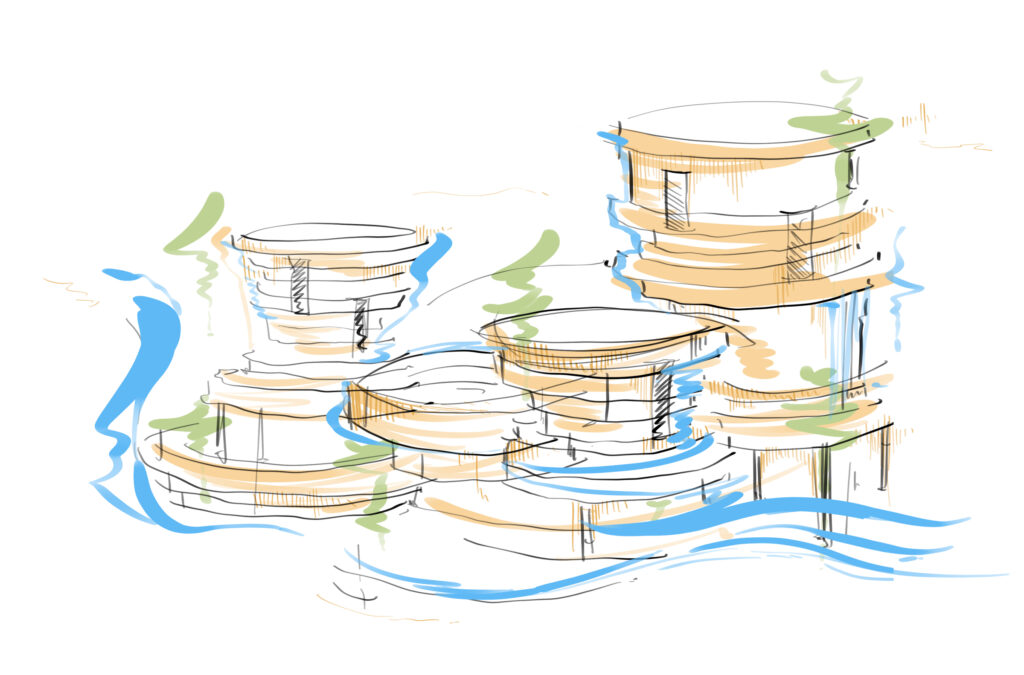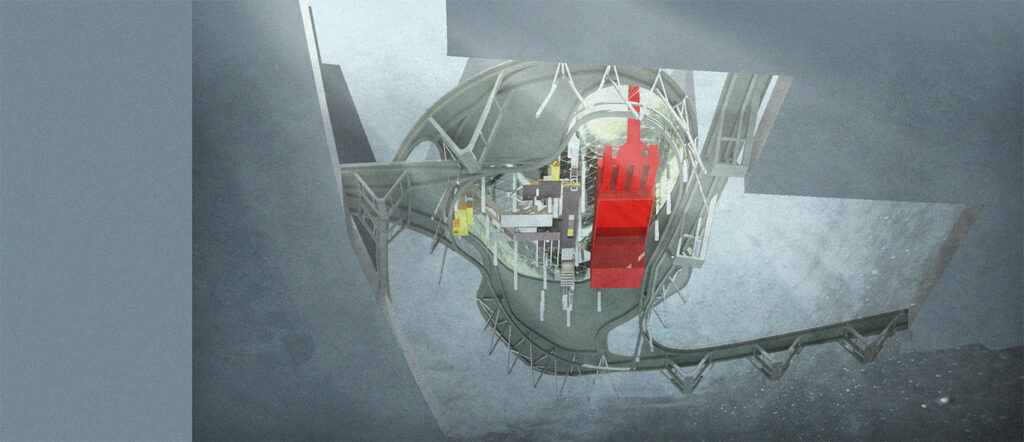DESERT LANDSCAPE
Water is essential for life, and becomes a precious commodity when it is in scarce supply.
Only 5% of Earth’s water is available freshwater. In the Desert Landscape, residents must take water consumption and retention very seriously, and maximize the benefits of however much water they have available. They carefully consider how to capture, reuse, and store water to combat droughts, which can last for months or years. Maintaining a sufficient supply of water that is clean enough for drinking is particularly important.
Reservoirs are one effective tool for retaining a large quantity of water– enough to sustain urban populations– and when they are controlled by a dam, the dam can also provide hydroelectric power. Hydroelectric power, or hydropower, is generated when the natural flow of water spins a turbine, and it can be captured from water sources of all sizes: from giant dams to small streams and municipal water systems. It is one of the oldest and largest sources of renewable energy, and provides an estimated 16% of the world’s energy.
Vote For Your Favourite Below
Des(s)ert Mender
Desert Dam
T.K.R

Des(s)ert Mender, T.K.R’s gingerbread city masterpiece, symbolizes a dream: to bring life-giving water to arid terrains, healing the land. Crafted from delectable desserts, its name playfully marries our sweet materials with our profound hope for rejuvenation.
Using a dam and desert, T.K.R highlight how water management can revive barren areas. The desert’s challenges inspired our innovative architectural designs, emphasizing the potential of human-made structures to benefit the Earth.
Meet Theo,Tia, Kelly, and Ruying: united designers and friends since their Pratt Institute days. As graduates from this prestigious institution, they now collaboratively channel their unique talents and shared passion into groundbreaking architectural endeavors. Together, they transform visions into reality, building the future one project at a time.
Case Study: WTE
WTE is a Waste to Energy Center on the East River. Our intention was to design an elegant and light building that ‘floats’ by the East River and used a translucent ‘veil’ to embrace the WTE machine. We want to turn this building into LIC’s new landmark.






